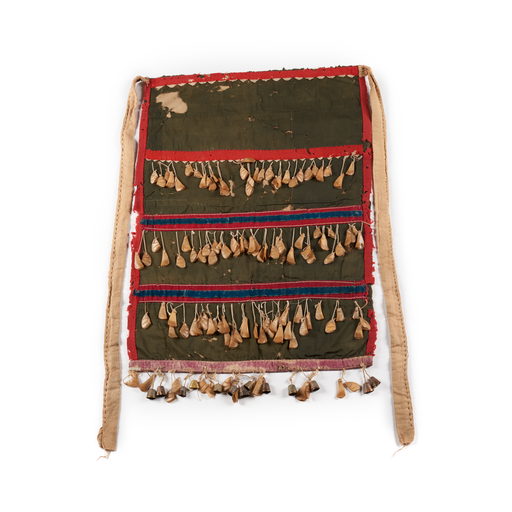tsep
Dance Apron
Most aprons today are decorated with family crest designs, but this one is an older, plainer style. It does have what the Kwakwaka’wakw consider the most beautiful of noise-makers – puffin beaks. Puffins shed their beaks after mating season. The Kwakwaka’wakw used to travel to a small distant island to climb dangerous cliffs to retrieve the beaks from the puffins’ nests for their aprons.
Owner
Iwakalas, Harry Hanuse, Mamalilikala (Village Island)
Catalogue Information
Provenance
Owned by Harry Hanuse until its forced surrender to Indian Agent William Halliday on March 25, 1922. Halliday later displayed and photographed the seized pieces at the Parish Hall in Alert Bay. After doing an inventory, he crated the items in June, and at the end of September he shipped them to Edward Sapir at the National Museum of Man (now the Canadian Museum of History). They remained the property of the NMM until their repatriation by the U’mista and Nuyumbalees Cultural Societies in 1979. In September 1993 Dan Hanuse Sr. requested that his father's pieces be transferred from Nuyumbalees to U'mista as per the wishes of the majority of Harry Hanuse's descendants.
Materials
Fabric; Bill, Puffin; Metal, Thimbles
Dimensions
73.5 cm x 51.0 cm
Accession Number
94.09.023
Physical Description
Dance apron with three rows of puffin beaks, the bottom row is a mixture of puffins and thimbles. The background is black with three horizontal red bars. There is also red fabric bordering the entire apron.
